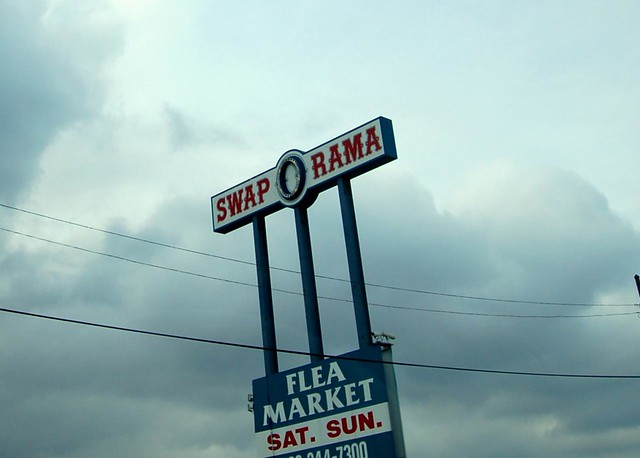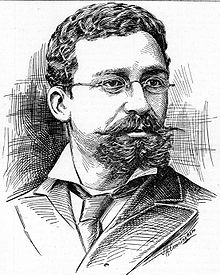Thursday morning was as hectic as mornings ever are with a three-year-old and a seven-year-old; I was even more confused than usual: "Get your shoes and go to the back door!" I was saying, when Dr. Fledermaus reminded me that we were going out the front door, and walking to school, picking up the bikes, and then carrying on as usual. [SFX: Cue even more ominous music.]
Arriving at school, what did we find? Dr. Fledermaus's bike, my bike trailer...and a heavy duty chain and cut mini-U-lock on the ground.
Lunchtime. Enough mooning about the crappy summer. Three dead pets and a stolen bike--it was time to take fate into my own hands.You make your own luck. (Hah. So I told myself.) "Everyone knows," my internal monologue went on, "that stolen bikes show up at Swap-O-Rama."
The flea market. I don't know how many acres, but it's two and a half city blocks of stolen, grey-market, and otherwise dubiously capitalistic tools, stereo equipment, DVDs, socks, shampoo, dried beans, and, yes, bikes.... I walked the full grounds, singleminded in purpose: checking out every plausible bike..could it have been repainted in a morning? New decals put on? bar tape changed? Nothing. Kids bikes, BMX, road bikes, mountain bikes, single speeds. There was a yellow van I went by twice; it had two nice rides on the roof, but its open back doors were facing a concrete wall--could it be inside? A pickup truck pulled out, having closed up shop for the day, with at least fifteen close-packed bicycles in the back, held down (more or less) with clothesline. None looked like mine. I thought.
Eventually, I texted my wife to say, "Saw a bunch of stolen bikes, but not mine." I was taking a last mosey around, contemplating how many visits it would be worth making, but mostly looking for friends' recently stolen bikes, when I spied, past a pile of tools, toys, and electronics accessories, a glint of silver and white in the back of a guy's dirty red van: There it was! I'd recognize that 1" head tube and silver brake lever from...well, 45 feet. I walked up and said, "That's my bike in your van. I'm going to need it back." He immediately started talking about "the guy who sold it to him" but I didn't listen. There was one thing I was there for, and that was in front of me. It was in my hands. I took it and got the hell out of there, never looked back.
When I got back to the car, I took a longer look. She'd been stripped of her pump, saddlebag, trailer hitch, SPD pedals, any reasonable dignity of handlebar angle, and one bottle cage, but she was mine again.








